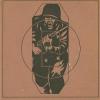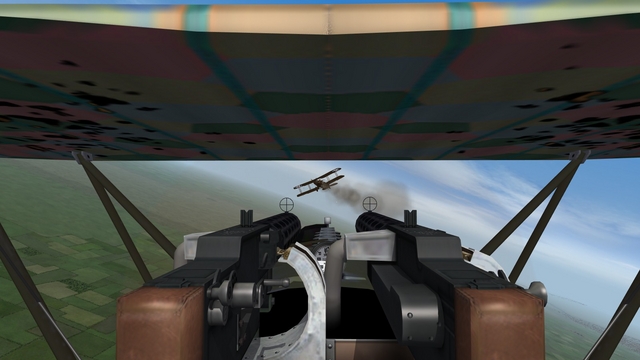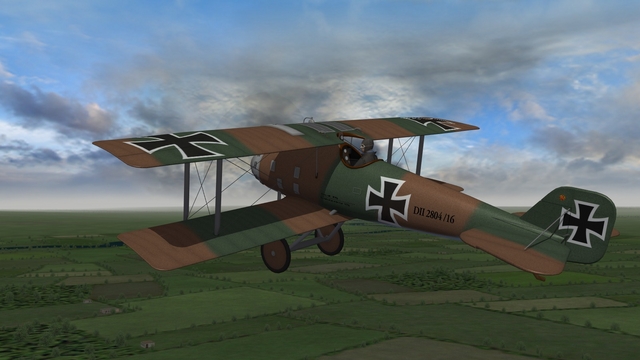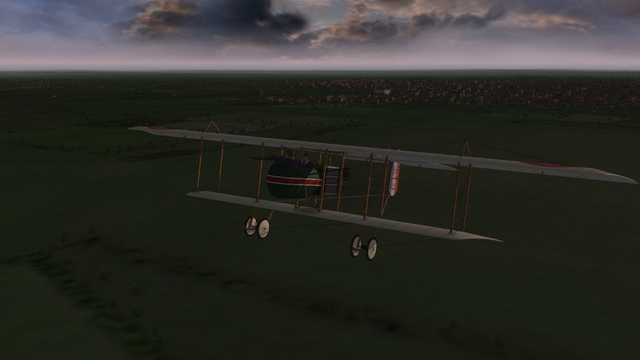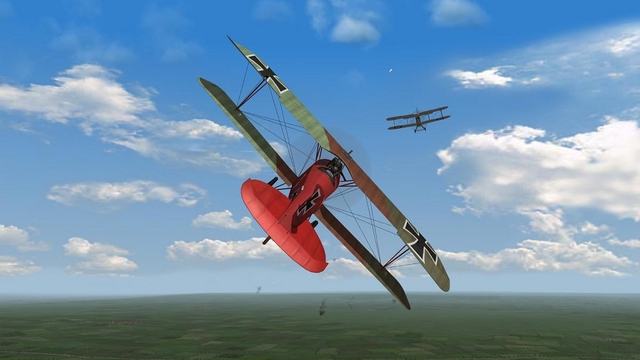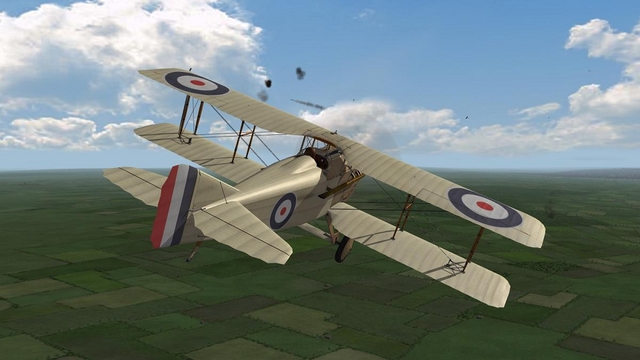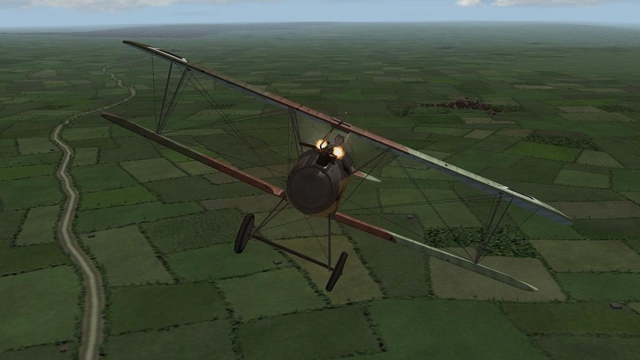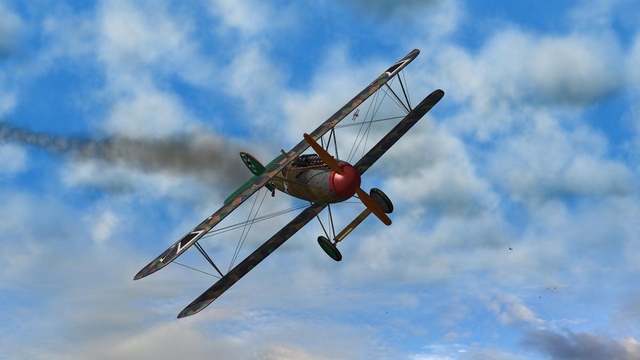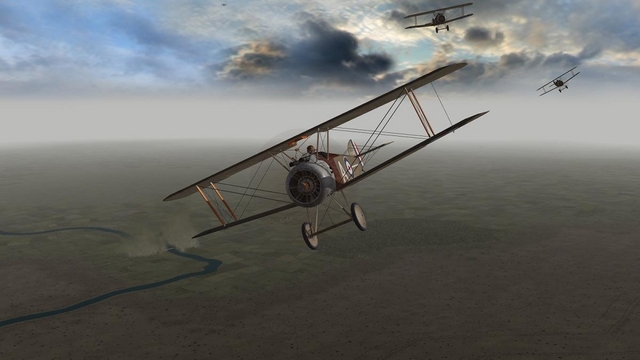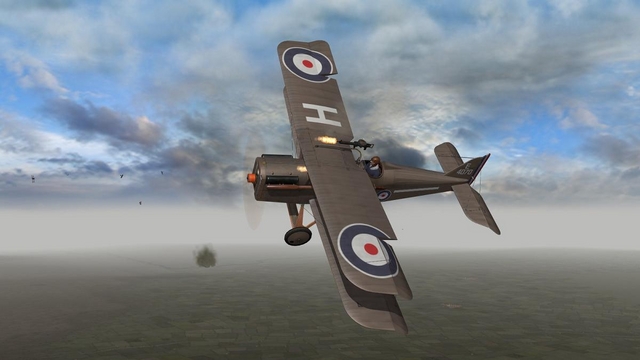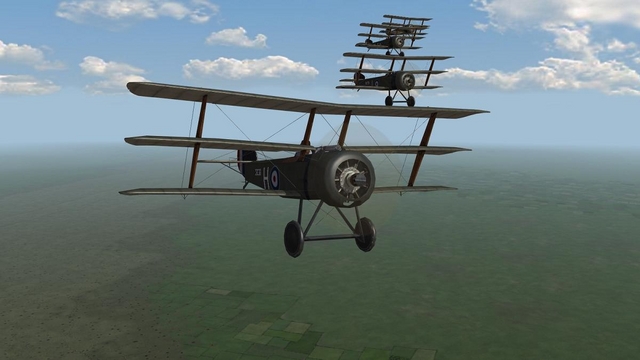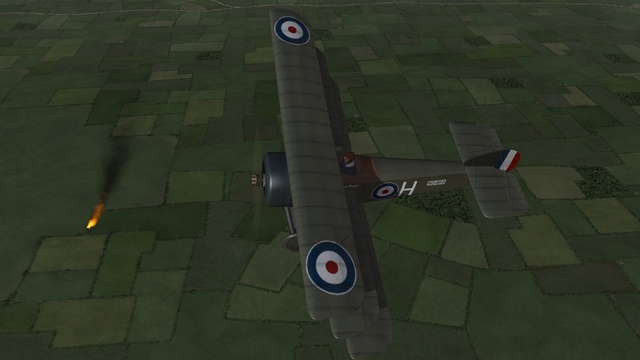Search the Community
Showing results for tags 'first eagles 2'.
Found 28 results
-
Hi All, Have been doing a bit of tinkering lately with my FlightGear install - and results are pleasing enough in what is a free, open-source flight sim. Managed eventually to get accurate photo-scenery working in FG, which is a noticeable improvement over the stock (dated) scenery that has been available in that sim for years on end (see pic. below for photo-scenery at work in FG, in this case in the Mesopotamian/s. Iraqi area; the Alb. D.I is a re-skin and FM-overhaul of a model done by Lester Boffo). On a hunch, I then converted a bunch of the photo-tiles from FG (stock format is DDS) to BMP format - so that they become visible in the FE2 terrains folder - and it does indeed work - but would require careful, aesthetic choices regarding what tiles to replace in the terrains folder, such as farms, cities, deserts, etc. - for best cohesion and not too many jarring disconnects between tiles. Nice to see that stock trees and buildings are populating over the satellite/ortho-terrains too, in FE2. Photo-scenery is simply an improved "satellite" carpet that covers the stock scenery and terrain framework in FlightGear - and by extension works the same way in the ThirdWire sims but requires manual conversion to BMP format and manual placement in the terrains folder (perhaps the DDS format would work too, but I didn't bother tinkering with the various settings/text files this time around in the terrains folder). The other good thing about FlightGear is that it is fully under the GNU GPL (General Public License; i.e., "copy-left" license) - so there are no copyright problems that I know of if one borrows such ortho-scenery for FE2 too (haven't bothered to test with SF2). And if working on such a terrain swap as a personal project - that is of course even simpler. A few representative pics. below with just a few ortho-scenery tiles placed over Stephen1918's upgrade of the Mesopotamian theater for FE2. Results look pretty good, particularly when flying higher up, and I haven't noticed any FPS drop with the photo-scenery tiles loaded. Some old tiles are still in place in the pics., for comparative purposes. Any empty areas are where I didn't bother to load tiles. Anyway - I hope you find this post interesting - it's perhaps the "cheapest" way of upgrading tiles across the various theaters available for FE2. If I find enough free time I might tinker further with this side-project; will post comments if the results prove particularly successful. Cheers & good flying,
- 3 replies
-
- 9
-

-

-
- photographic scenery
- first eagles 2
- (and 4 more)
-
Hi All, Have now posted my ReShade preset file for FE2 (and SF2) in the following post located under the FM Tweaks Package thread: https://combatace.com/forums/topic/87403-tweaked-flight-models-and-realism-pack-for-fe2/?page=8&tab=comments#comment-783977 See below for examples of before/after pics. with stock shaders and improved shaders loaded in FE2 (the preset was tested in ver. 4.9.1 of ReShade). Was never able to get the ENB Series shaders files working in FE2, or even SweetFX for that matter - but this (later) version of ReShade works great. More details/info. included in the "Read Me" file that comes with the zipped download package. I think that the sun/color effects are now a little bit closer to the (realistic) tweaks that Geezer mentioned, a few yrs. back, in one of the threads here - regarding improved lighting and various color effects in FE2. Loading a preset file via ReShade is of course simpler than manually tweaking the environsys.ini file in FE2. The other good thing about these improved shaders is slightly smoother anti-aliasing effects too than in stock configuration. Also, no negative effect on FPS with these shaders loaded and that I was able to observe. Happy flying all, Von S Example One - Stock Shaders in FE2 Example One - Improved Shaders Loaded in FE2 Example Two - Stock Shaders in FE2 Example Two - Improved Shaders Loaded in FE2
-
- 5
-

-

-
- first eagles 2
- fe2
- (and 5 more)
-
Have been tinkering over the last several days with settings inside the terrain data ini files for various theaters - and I think I've managed to get rid of remaining town/building flickering that I've been experiencing in FE2 occasionally. While the towns never looked psychedelic on my rig., the flickering at times ruined immersion. The trick, on AMD vid. cards apparently, is to toggle several settings in the "AlphaObjectTexture" section. Have also gone through various object types and will upload the files under my thread for the FE2 FM package once I'm done with some more tweaks. Those who are running AMD vid. cards will notice that the towns/buildings look a bit more see-through (holographic) with the tweaks, but tree intersection with buildings looks more natural now from a distance - and the important thing is that the flickering is gone. Some representative pics. below - also take note that with "AlphaTestEnabled" set to FALSE, under the "AlphaObjectTexture" entry - there is even further overlap/intersection of different tree types that way - makes for more depth and also camouflage as seen in one of the pics. with the lower wings of the Alby hidden with foliage (also second-last pic.). Will also look at some of the MassFraction entries in the data inis for the Alb. D.I, D.II, also the D.III and D.V variants since they are rather difficult to shoot down although there is no armor on them and structural strength numbers look normal. Perhaps a leftover oddity from the days of the stock Albies - but will look into it and will upload any modifications under the post where I've included the tweaked FM for Stephen's Tripe - and what a beautiful model that is - have been flying it for a few days already. Von S
- 1 reply
-
- 4
-

-
- first eagles 2
- amd video cards
-
(and 2 more)
Tagged with:
-

Autorudder, Autocentering, and related tweaks, etc.
VonS posted a topic in Thirdwire - First Eagles 1&2
Hello fellow FE2 fliers, Instead of posting under the stickied "ini tweaks" thread - that hasn't seen fresh posts in a couple of yrs., I thought I'd open a separate (small) post here for something I stumbled upon only yesterday while tinkering with my rudder setups in WOFF and IL2-BoM installs - and I realized that it might work well for FE2/SF2 too. Those of you flying with "twist" joystick and/or rudder pedal setups might still find this helpful - but it is especially intended for those of you who are still flying with older/cheapish sticks (such as the Logitech Attack 3 in my case, with no twist capability) - you most likely have left/right rudder mapped to the top left/right buttons on the joystick. In WOFF, and other sims, it's usually a question of (manually) clicking several times left or right to get desired rudder input, and then clicking the center button on your stick to center the rudder. For a few yrs., I've really only been frustrated by one thing in the TW sims., and that was the "snappish" response of the auto-rudder setup - until I dug further into some of the more obscure entries of the Default.ini file located under "C:\Users\Yourusername\Saved Games\ThirdWire\FirstEagles2\Controls" (same directory path for SF2, except substitute StrikeFighters2 for FirstEagles2). The relevant entries to tamper with are the following three: ----- [RangedControl001] AxisControl=PITCH_CONTROL MaxValue=1000.000000 MinValue=-1000.000000 DeadZone=0.000000 Saturation=115.000000 ReverseJoystick=TRUE MouseScale=1.000000 UseMouseRate=FALSE ReverseMouse=FALSE LimitValue=TRUE SelfCenterRate=1.000000 -----> I recommend setting this to 1.0 for FE2, to slow down the elevator self-centering rate for WWI 'crates with their wires and cables (leave at the default value of 2.0 for WW2 and Cold War installs in SF2 with "faster" hydraulic setups) //2.000000 KeyControlRate=1.000000 AllowKeyControl=TRUE IncreaseControl=PITCH_DOWN DecreaseControl=PITCH_UP CenterControl= [RangedControl002] AxisControl=YAW_CONTROL MaxValue=1000.000000 MinValue=-1000.000000 DeadZone=0.000000 Saturation=115.000000 ReverseJoystick=FALSE MouseScale=1.000000 UseMouseRate=FALSE ReverseMouse=FALSE LimitValue=TRUE SelfCenterRate=0.100000 -----> recommended, for those using left/right joystick buttons to control rudder, is to reduce to a value of about 0.1 for WWI 'crates, again to simulate cable/wire control, but also in order to allow for lots of manual left/right rudder correction that, once you stop controlling rudder, allows it to return back to center position somewhat slowly (takes about 10 seconds to return to center); for WW2 and Cold War SF2 installs, a better value to use is something like 0.25 for the self-center rate, again to mimic the extra force of hydraulic controls //2.000000 KeyControlRate=1.000000 AllowKeyControl=TRUE IncreaseControl=YAW_RIGHT DecreaseControl=YAW_LEFT CenterControl= -----> have not bothered to use this since I like the 0.1 value for self-centering, for FE2, but, for those lacking twisty rudders or pedals, the most logical choice here is the top center button on the joystick, sandwiched between the left/right buttons for left/right rudder input [RangedControl003] AxisControl=ROLL_CONTROL MaxValue=1000.000000 MinValue=-1000.000000 DeadZone=0.000000 Saturation=115.000000 ReverseJoystick=FALSE MouseScale=1.000000 UseMouseRate=FALSE ReverseMouse=FALSE LimitValue=TRUE SelfCenterRate=1.000000 -----> I recommend setting this to 1.0 for FE2, to slow down the aileron self-centering rate for WWI 'crates with their wires and cables and generally sloppy ailerons (leave at default value of 2.0 for WW2 and Cold War installs in SF2 with "faster" hydraulic setups, as with the elevator setup in the relevant entry in this post) //2.000000 KeyControlRate=1.000000 AllowKeyControl=TRUE IncreaseControl=ROLL_RIGHT DecreaseControl=ROLL_LEFT CenterControl= ----- Von S- 4 replies
-
- 6
-

-
- fe2
- first eagles 2
- (and 6 more)
-
Hello gents', Thought I'd post some speculations and observations on the FM aspects of some things in FE2 and SF2 that I've recently been tinkering with. This might be an interesting post for those who like to follow these technical threads. I was recently installing more aircraft into my small SF2 install - something I wanted to get to last year but had no time - and I decided to install a couple of the late prop aircraft too, particularly the SeaFury and F4U-5 variant of the Corsair. Overall pleased with the handling of the types, I tweaked a few things such as desensitizing the rudder on them, and also giving them slightly heavier aileron feel - since those late model prop aircraft were fairly heavy, about 4500 kg on average. Further testing involved flying and inspection of the [FlightControl] and [Engine] sections...couldn't get much beyond about 500 kph near sea level or at alt. in the types...so I commented out the MaxSpeedSL entry for the FlightControl, and tweaked prop speeds to close to historical, within the 2000 to 3000 rpm range, also pushed up the value for the SLPowerDry entry for the Engine, usually by a noticeable amount, and then tested further. Some of the things I've noticed, in terms of SF2 specifically (but this post is relevant to FE2 too): a) WEP power is not modelled realistically, since you can keep running it without engine damage b) WEP power doesn't give much of a boost, if at all (although I've only tinkered with the SeaFury and Corsair so far) c) a better way of simulating, however simplistic it is, the potential of WEP power, is to manipulate the AltitudeTableData numbers instead (for example, I plugged in values ranging from about 1.05 to 1.35 around the 6000 m alt. band, which should be where the Corsairs benefitted the most from max. throttle) d) after manipulation of the AltitudeTableData, it's best to get rid of the WEP entries entirely, and set up "throttle gradients" instead under the engine sections, such as: ThrottleRate=0.65 IdleThrottle=0.12 CruiseThrottle=0.45 MilThrottle=0.70 MaxThrottle=1.00 The numbers above I've plugged in, for example, for the Corsair. The space between Military throttle and Max throttle would be where "WEP power" would theoretically in this case be engaged, somewhere around the 0.85 mark for the band I've selected above. For this to work somewhat realistically, the player should restrict themselves to about 85% throttle max. except in extreme situations, depending of course on where military and max throttle are set. Also important for this to work is to make sure that the max SL speed under the FlightControl section is left uncapped (commented out) - otherwise artificial barriers are set up that cannot be bypassed by more than about 20-30 kph. Speed caps work beautifully in SF2 for the jet engines, but, at least from my experience, don't work that well with the late prop planes since you can then never hit top max. recorded historical speeds, not even at alt. - and not at SL either. Also noticeable in the example above is that I've increased the throttle rate from the default of about 0.25. Historically, late prop aircraft would have had better acceleration than early jet planes (not better top speeds, but faster acceleration to their own max speed). By the 1960s/70s, jet engines should surpass the props even in acceleration. I then re-tested by dumping the modified Corsair into my FE2 install. In SF2 it can get into the 760s kph, as historical, using the engine and throttle values I've included in my graded throttle settings above, while in FE2 the same tweaks push the top speed into the 880s kph - a difference of about 120 kph for top speeds, across FE2/SF2. This is why it's not a good idea simply to transfer data inis from one of the sims to the other. I'm assuming that the discrepancy in top speeds means that TK went with calculations to give less air resistance in FE2 (maybe FE as well?) - to fit better with the more fragile and maneuverable WWI aircraft types. One thing that remains constant between FE2 and SF2 is that, at least from my observations, the WEP modelling is not very realistic - there was no high alt. band where I could push the top speed beyond, for example, a reasonable top speed that may have been possible at near sea level (such as 500 or 600 kph). Some preliminary conclusions, to be tested further: a) speed caps at sea level should be kept in place in FE2, as done in the data inis in my FM packs, since they fit better with the lower top speeds of the early aircraft anyway, and mach limits should also be kept fairly low (I have them set at 120% of the "top speed" of the WW1 aircraft....this allows for realistic dive speeds that I haven't been able to push beyond about the 460 kph mark even on the late war types such as the SE5a) b) flying late WW2 and early Cold War prop aircraft in FE2 is not recommended, but FE2 may be good for "Golden Age" stuff, as Geezer speculated upon in another thread (can't remember the link for that now), in other words for aircraft that don't have a top speed higher than about 350 or 400 kph c) the difference between top speeds at alt and at sea level are modelled just fine for the jet engines in SF2, since caps on SL speeds, and Alt speeds, work fine for those (have seen this in some Flogger tweaks that I did for my mini-SF2 install); in other words, SF2 respects the wet/dry mach values and alt table entries beautifully for jet-age stuff d) I think that the MaxThrottle value in SF2, for the prop aircraft, could use some more tinkering/testing...I've set it at 1.00, but will try other values of 1.20, 1.50 etc., to see if this creates more realistic differences between regular power and WEP, or some kind of "accordion" effect e) as it stands, I'm enjoying the SeaFuries and Corsairs but only with SL speed uncapped and giving historical top speeds not at alt. but near sea level (this is a compromise of sorts since, at alt, they still make about 600 kph and sometimes a bit more - so I'm not terribly irritated by not attaining 740 kph at 7000 m alt or so, for example, in the SeaFury, as recorded for that plane) f) a couple of pics included below of the AI in SF2 now losing control of their F4U-5 Corsair during a scrap, and doing several back flips (too much throttle applied perhaps?); he then bails out of the otherwise undamaged plane; so, overall, I'm liking the realism of some of the haphazard maneuvers they now make, and also the increased speed at which these late prop fights now happen, even on the deck g) anything that I find of further use in the SF2 data inis, and if relevant to FE2, I will tinker with more to bring even more realism into FE2 (the lockout speed trick implemented for control surfaces in the alternative Morane-Saulnier type N data ini posted under the FM thread for FE2 is an example of things discovered while combing through the SF2 files) Happy flying, Von S
- 23 replies
-
- 6
-

-
- observations
- data ini files
- (and 8 more)
-
Hello gents', A quick heads up for those running FE2 in WineSkin on a Mac - keep in mind that FE2 is a 32-bit program. MacOS 10.15 and later will not be supporting 32-bit programs anymore (only 64-bit). This of course is a problem considering that WineSkin (and other Wine programs for Macs) are currently 32-bit. While WineSkin may eventually go 64-bit (this is a slim possibility), there is no guarantee that 32-bit programs like FE/FE2 will be able to run in it even if it is 64-bit, considering that MacOS 10.15 and later are stripping out most if not all of the 32-bit code from their OS. This leaves Mac fliers of FE2 in a precarious position. Options are eventually to go over to Windows and drop fiddling with WineSkin, or to keep running your older Intel Macs (like my 2012 quad-core Mini), or grab another Mac and sort of future-proof yourself, with something like a Mac Pro or the newer Mac Mini (2018), providing you don't upgrade past MacOS 10.14 (last one to support 32-bit). SF2 by the way is 64-bit, and so is WOFFue - so those are good to go into the future of 64-bit OSes, on the Windows side. No guarantees that you will be able to fly WOFF/SF2 in future Mac OSes however because WineSkin may remain 32-bit only (no telling what's going to happen with Wine on a Mac at this point). Have been reading some forums that the Wine folks may move over to Linux entirely if the Mac world drops 32-bit...not good news for legacy simming/gaming. Anyway, I'll probably future-proof myself in some way with an extra Mac or two since I like running FE2 in WineSkin and there's no dropping FE2 once you get the modding bug. Happy flying, Von S UPDATE: The CodeWeaver folks working on CrossOver (a fork of Wine) may be developing a way for 32-bit code/libraries to be loaded into a 64-bit version of Wine - something that may eventually be ported to the general branch of Wine too - but again this is work in progress and no telling what will happen until the dust settles down over the next couple of years, in terms of 32-bit gaming on a Mac, in Wine. Linux has a 64-bit version of Wine that can load 32-bit code for older games, and it seems to have had this for several years already - but this is not relevant to gaming on a Mac. Will update this post further if any (good) news emerges.
-
Hello gents', Any thoughts on starting up a DiD (dead is dead) series of single missions in FE2/FE? Should help to bring new life into our special sim. Rules don't have to be as strict as for the DiD campaigns running for WOFFue over on the SimHQ website, but a list of some sensible rules should help to get everyone started - and will be a good break from modding and skinning too. I'm including some preliminary rules below and will try to start up a series of (DiD) single missions soon, either on the eastern or western front (have spent two years already in the Palestine front and currently looking for a change). This may work in campaign mode too (such as for Ojcar's campaigns), but I've tried to develop the rules specifically around single, evolving missions, for variety and historical realism. If you choose to start up a DiD series of single missions, don't forget to post brief notes on your exploits and some good screenshots here on this thread - for immersion - posts can be brief or long, as per taste. RULES FOR DID STYLE SINGLE MISSIONS IN FE2 (probably works in FE/FEgold too) 1. make sure to begin with a new pilot if your current one is killed in action 2. missions must be flown from your base to the target and back again (no in-the-air or close-to-target beginnings); you may however skip/delete certain waypoints while en route if they are less important to getting to your target area 3. missions may be begun in scouts or two-seaters, whatever you prefer (no need to begin with a two-seater career) 4. if you are shot down and alive but "captured" behind enemy lines (such as sometimes happens after bailing out at low altitude), fast-forward six months for your next mission for the western front, and one full year for the eastern, Italian, and middle eastern fronts (we will assume you eventually escaped back to your side of the lines); these same rules apply if you manage to crash-land and survive on the wrong side of the lines (with wing missing, fuel leak, etc.) but have not bailed out 5. crashing into your wingmen or enemies will count as legitimate termination of your current pilot and will require that a new pilot be made 6. one out of every ten missions must be flown from start to finish in bad weather (inclement or snow, your preference depending on season, but avoid snow if flying in the middle eastern theater; I recommend the latest inclement/snow tweaks found in ver. 9.5 of my FM pack, for immersion) 7. use the following settings for "enemy air activity" in the FE2/FE menu, per theater and per period, for max. historical realism and to minimize extreme kill ratios: light - for the whole period in the middle eastern theater // for the whole period in the eastern theater // for the Italian theater to July of 1917 // for the western theater to October of 1916 // for the Italian theater from August to November of 1918 // for the western theater from August to November of 1918 moderate - for the Italian theater from August of 1917 to July of 1918 // for the western theater from November of 1916 to February of 1918 heavy - for the western theater from March to July of 1918 8. lighter "enemy air activity" than suggested per period and theater may be used, but not higher than suggested (no need to install my further congestion controls that are available in the Flight folder of ver. 9.5 of my FM updates pack unless you enjoy hard-core simming in WW1 with wide expanses of sky, with no aircraft for hours on end; I will work on those further to fine-tune them for a later FM update pack) 9. flight models should be flown at maximum realism (I strongly recommend my FMs for historical realism and consistency for a DiD series of missions but you can fly other ones too, as long as they are flown on "hard" settings) 10. no time compression 11. no autopilot (although the level flight command is acceptable for long flights) 12. make sure to have Cap'n. Vengeur's medals pack/ranking system installed since that pack gives awards more slowly and realistically 13. you may begin a DiD style single mission at any point in the war (for example, you may begin flying for the French in July of 1916, or as an American flyer in August of 1918, etc.) 14. if you are flying DiD style single missions, proceed chronologically from the date of your first single mission (for example, if your first single mission was in July of 1915, your next one should again be in July of 1915 or later, not earlier in the year) 15. fly a minimum of 2 and maximum of 5 missions per month in 1914 and 1915 (across all theaters), a minimum of 3 and maximum of 6 missions per month in 1916 (across all theaters), and a minimum of 4 and maximum of 8 missions per month in 1917 and 1918 (across all theaters) - this will produce realistic, historical attrition rates and also increasing risk of being shot down, captured, etc. (will also depend at what initial point in the war you begin your pilot's missions; for example, beginning in January of 1917 will put you in a situation where you will be flying a min. of 4 missions per month right away); if your mission is stamped with a date that is only a few days from the end of a month, start your next mission in the following month, overriding the rules set for min./max. flights per month - this will be the only exception to rule no. 15, for the sake of chronology 16. transfers from one theater to another are allowed if historically realistic and if made possible by Cap'n. Vengeur's medals pack (for example, flying for the French in 1916 but transferring in June of 1917 to fly for the French giving support to Italy, in the Italian theater, perhaps flying a Nieuport, etc.) 17. if transferring from one theater to another, skip one month of flying for realism 18. if you crash-land but survive on your side of the lines (for example, wing missing, engine shot up, fuel leak, etc.), skip one month of flying for realism (hospital) 19. any type of single mission may be flown, depending on the types available for the aircraft you are flying at the time, but one out of every ten missions minimum must include one of the following types of missions (these are usually the most rigorous): offensive patrol // balloon busting // (armed or unarmed) reconnaissance // army co-op; reconnaissance missions may sometimes be gruelingly long if they are the "long reconnaissance" type 20. settings in your huddata.ini file, in the Flight folder, should also be set realistically, as follows (notice the map and label settings giving limited info., and also notice that the target cone and other identification boxes for aircraft have been disabled; the waypoint boxes can be left on, and padlock view may be used): [HUDLabels] EnableLabels=TRUE LabelFriendlyAir=TRUE LabelFriendlyGround=FALSE LabelEnemyAir=TRUE LabelEnemyGround=FALSE [MapLabels] EnableLabels=TRUE LabelFriendlyAir=FALSE LabelFriendlyGround=TRUE LabelEnemyAir=FALSE LabelEnemyGround=FALSE [Map] MapDisplayLabels=FALSE [Display001] DisplayType=DIRECTOR ObjectType=TARGET_ENEMY //ConeSize=5 //BoxSize=5 //BoxType=TRIANGLE //BoxColor=0.0,1.0,1.0,0.75 //ConeModelName=redcone [Display002] DisplayType=DIRECTOR ObjectType=TARGET_FRIENDLY //ConeSize=5 //BoxSize=5 //BoxType=TRIANGLE //BoxColor=0.0,0.0,1.0,0.75 //ConeModelName=bluecone [Display003] DisplayType=DIRECTOR ObjectType=NEXT_WAYPOINT ConeSize=5 BoxSize=5 (pick size you want, I prefer smaller boxes) BoxType=SQUARE (use whatever shape you want, TRIANGLE or CIRCLE work too) BoxColor=1.0,1.0,0.0,0.75 (use whatever color you want for this) //ConeModelName=whitecone Happy flying DiD style, Von S
- 12 replies
-
- missions
- pilot careers
- (and 6 more)
-

Spandaus, Vickers, Lewis and Ejection of Cartridges
VonS posted a topic in Thirdwire - First Eagles 1&2
For FE/FE2 Flyers interested in little oddities of WW1 flight, Thought I'd open a small mini-post with some interesting info. on cartridge ejection on WW1 machine guns, as related to my tweaked data inis. I usually like to keep the ejection-of-cartridges call set to True on single-seaters, including top-wing mounted Lewis guns, or Vickers or Spandaus that are in front of the cockpit. Toggle that setting under the Internal Gun section of your data inis to preference, either to True or False, if you're distracted by empty flying cartridges while flying. On two-seater and multi-seater types, especially for observers/gunners, I usually have that setting at False, since many observers had setups with cloth or leather bags attached to the guns to catch spent cartridges. One exception to the rule is of course the one-seater pusher type, such as the DH.2 - you don't want spent cartridges from those flying back into the engine or propeller (as historical). A good post on the topic is here: http://cs.finescale.com/fsm/modeling_subjects/f/2/t/150528.aspx?page=1 Also good is the opening, lengthy post on that forum. Happy flying, Von S-
- 1
-

-
- first eagles 2
- fe2
-
(and 3 more)
Tagged with:
-
Hello fellow FE/FE2 flyers, As a continuation of my experiment to include over-compression tendencies in the 200hp Daimler engine for Geezer's Junkers J.1 model, I did some (successful) tweaking of the previously tweaked data inis for the the BMW-powered Fokk. D.7 and late, 200hp Alb. D.5a. Tinkering with the following values in the data inis is required to get things working well, under the Engine section: AltitudeTableNumData AltitudeTableDeltaX AltitudeTableData The NumData should reflect how many values are present under the AltitudeTableData section. The DeltaX number is finicky, the general rule being that a higher number gives more powerful engine results across wider alt. bands but is perhaps less historically realistic, while in some cases a lower number is required, for example to "unglue" the AI from the ground in case the AI has trouble handling a particular plane, and also to create more subtle and gradual performance drops across smaller/thinner alt. bands. [Edited this section to include more accurate info.] TheAltitudeTableData entry begins with a value of 1.000 - ground level number, and then gradually falls off to 0.000. Correct over-compression of an engine requires that a number higher than 1.0, usually a few entries that are higher than 1.0, are included at the start of the AltitudeTableData entry - to generate the correct effect if an over-compressed engine is at full throttle near sea level. Values under the FlightControl section, particularly top speed values, then become a reflection of top speed at altitudes between about 1000 and 1500m - typical heights at which Idflieg would have over-compressed engines tested. (This also depends on the DeltaX number and where the AltitudeTableData value of 1.000 begins: for example, values of 1.200, 1.050, 1.000, etc., with a DeltaX no. of 500, would mean that 100% performance is at 1000 m alt.) It's no wonder that there is some confusion therefore regarding top speeds of the BMW-powered Fokk. D.7, and if its numbers are reflections of what happens near sea level or at 1 km alt. approximately. [Added important info. here too.] Here is a snippet from TheAerodrome.com for the 180hp Mercedes (au) installed in many Fokk. D.7s: "Climb rate is 5 m/s at sea level, falling linearly to 0 m/s at 6 km, marked as the "theoretical ceiling". Climb rpm begins at 1400 rpm at sea level, falling to 1310 rpm at 5600m." "Level speed: 0 km: 190 km/h @ 1570 rpm 1 km: 188 km/h @ 1580 rpm 2 km: 182 km/h @ 1530 rpm 3 km: 177 km/h @ 1490 rpm 4 km: 167 km/h @ 1430 rpm 5 km: 152 km/h @ 1360 rpm 6 km: 124 km/h @ 1280 rpm" Here are the results for the newly tweaked BMW-powered Fokk. D.7: near sea level: 210-211 kph @ 100% throttle near sea level: 176-177 kph @ 70% throttle (cruise, not using high alt. throttle) 1000 m: 201 kph @ 100% throttle (this is the top speed usually cited for the BMW-powered D.7, but probably refers to at alt., not at sea level) 1500 m: 198 kph @ 100% throttle 3000 m: 187 kph @ 100% throttle 4000 m: 176 kph @ 100% throttle climb rate to about 1000 m, at 70% throttle, is around 3.5 m/s; climb rate remains fairly consistent beyond 1000 m, at 100% throttle, if speeds in 120s and 130s kph are maintained Results are a noticeable improvement over the Mercedes-powered D.7 (no wonder pilots wanted this type). Here are results for the newly tweaked 200hp Mercedes-powered Alb. D.5a: near sea level: 206 kph @ 100% throttle near sea level: 183 kph @ 70% throttle (cruise, not using high alt. throttle) 1000 m: 202-203 kph @ 100% throttle (Goering supposedly reported maintaining over 200 kph in level flight in an Alb. D.5a...perhaps the 200hp variant?) 1500 m: 198-199 kph @ 100% throttle (this is the top speed sometimes cited for the late variant Alb. D.5a, again perhaps referring to at alt. and not sea level) 3000 m: 187-188 kph @ 100% throttle 4000 m: 177 kph @ 100% throttle 5000 m: 165 kph @ 100% throttle 6000 m: 110-112 kph @ 100% throttle (noticeable drop, since exceeding its ceiling here of about 5900 meters) 6025 m: 90-95 kph @ 100% throttle (begins to shudder and stall) climb rate to about 1000 m, at 70% throttle, is around 4 m/s; climb rate is around 3 m/s at 100% throttle beyond 1000 m, in 120s and 130s kph (slamming the throttle to 100% below 1000 m would not have been recommended historically, but gives a climb rate of about 5-6 m/s, similar for the Fokk. D.7...probably used in emergency scenarios) Results for the late Alby. are a noticeable improvement over the 180 hp Mercedes (au) Albies, and similar to results for the Fokk. D.7 - watch the wings though in dives on the Alb., especially with the now excess power. Also interesting is the historical realism of how the speed advantage at alt. for the high-compression engines remains fairly consistent across the altitudes (dropping off in small steps of about 5-10 kph per 1000 m), and then severely drops off close to the ceiling for the type. A gradual, more "curved" drop of speed for high-alt. engines should be seen for WW2 types - but is usually, mistakenly assumed of WW1, over-compressed types too, which would remain fairly consistent in power until close to their ceiling (see relevant discussions on TheAerodrome.com for more info.). Attached are the two tweaked data inis (will roll this eventually into a ver. 9.0 of the FM update pack). I'm still debating if I will tinker with the 180hp (au) Mercedes-powered types...the benefit of over-compression on those types would be small, probably too small to make any noticeable difference in FE/FE2. Happy flying, Von S [Files included in ver. 9.0 and later of my FM updates pack.]
- 17 replies
-
- 8
-

-

-
- first eagles 2
- realism
- (and 7 more)
-
Hello Gents, Here are the steps to take if interested in installing FE2 on a Mac. The procedure is similar to "bottling" of CFS3.1, the ETO and PTO expansion packs, also WOFF ue for the Mac, and of course RB3D, but a little "simpler" with FE2 (and RB3D) since less winetricks are required...the process is at any rate a slow one and requires patience, but is convenient if you want to have everything running on the same operating system. STEP ONE: go to https://sourceforge.net/projects/wineskin/ and download the latest wineskin winery (ver. 1.7 as of this writing) via the green "download" button there (for Mac OS vers. 10.6 to 10.12) [EDIT: if running Mac OS 10.13 or later, recommended instead is to install the "unofficial" WineSkin-for-Mac located at https://github.com/Gcenx/WineskinServer] STEP TWO: double-click on the program; in the menu that opens click on the plus sign to the left of "new engines available," and in the list that then opens choose WS8Wine1.5.1, download it, and then - when you're back in the main menu - choose "create new blank wrapper" (now wait about 3-4 minutes for your Mac to make the custom wrapper; once finished, the wrapper will be placed in an Applications folder that has been made inside your user folder on OS X and/or macOS) STEP THREE: go to the WineSkin wrapper that's just been made and double-click on it; in the window that opens, choose "set screen options"; in the window that then opens choose "override" instead of automatic, and choose "rootless (windowed)," then "virtual desktop at" (whatever resolution suits you), then "use these settings" instead of force normal windows; once happy with your choices, click on "done" at the bottom of that window STEP FOUR: back on the main menu, choose "advanced"; in the window that opens click on "tools"; this will then open another window in which you should click on "winetricks"; in the window that then opens, type in d3d in the search window at the top, then click to expand the "dlls" menu that shows up in the list below your search, and look for d3dx11_43, and click in the box to the left of it, to select it; now click on "run" located towards the bottom of that top screen of the window you're currently in, and let it install the winetrick; once the process finishes it will say "done" in the text window that is visible in the bottom half of that same window; finally, click on the "close" button at the very bottom of the window, and you're taken back to the "wineskin advanced" menu (close that advanced menu by clicking on the close button in its menubar) STEP FIVE: double-click on the wrapper once again and choose "install software" in the main menu; then "choose setup executable" in the next window that opens and locate your exe file for FE2 that you bought (usually called setup.exe or install.exe); now let the wrapper do its thing to install the game STEP SIX: once installed, the wrapper will go back to the main menu and you can click "quit" (it may also prompt you to locate the program before it drops to the main menu, the program in this case being the exe file of the game that was just installed - best thing at this point is just to leave this alone and close that window, if it doesn't drop to the main menu automatically) STEP SEVEN: once the wrapper has quit, don't double-click on it but "right-click" it and choose the option in the popup menu on OS X and/or macOS that says "show package contents" (this will open the wrapper's folder and should list something like a contents folder, the alias to its c drive, and an app/icon called WineSkin); double-click on the app named WineSkin and you will open the main menu window again, of the wrapper, and choose "advanced" STEP EIGHT: under the advanced menu, to the right of the box called Windows EXE (that contains a file path), click on "Browse"; this will open up your finder on OS X and/or macOS, and then you can scroll into the "c drive" of the wrapper into which you've just installed FE2; in "c drive," look for "Program Files," scroll into there and look for "ThirdWire," scroll into "ThirdWire" and look for "First Eagles 2," scroll into there and look for "FirstEagles2.exe" and choose that (click "choose"); then you're back in the WineSkin advanced menu with the proper file path for the game's exe now listed in the box near the top of the window (while you're there you might want to give a name for your freshly created Mac program in the "menubar name" box, something like First Eagles 2 or FE2, and also, later, don't forget to rename your wrapper/app to First Eagles 2, for consistency, if you haven't done so already) STEP NINE: now close that advanced menu window, and double-click the program you just created (not the WineSkin icon in the window that popped open when you right-clicked and chose "show package contents," but the actual, main wrapper that is in the custom Applications folder that was created in your user folder on OS X and/or macOS) - see if the game works, and if all is well, then double-click the WineSkin logo that is visible in the window once you right-click the main app wrapper to "show package contents"; once you're in the WineSkin menu again, click on "screen options" one more time and choose "fullscreen" instead of "rootless (windowed)," also choose your desired resolution in the box below that and leave the other options at 24 bit for color depth and 0 sec. for switch pause; all the other options there should be left as they are STEP TEN: since you've now run the game successfully (in windowed mode), you will find a ThirdWire/First Eagles 2 folder located in your Documents folder (of your user folder under OS X and/or macOS); in that folder you can find, under "ThirdWire/First Eagles 2/Controls," a Default.INI file that contains the keyboard and joystick controls for the game; open this ini file in TextEdit and modify the keys to your liking (also, don't forget to tweak the joystick sensitivity slider within the game's menu too, to get the joystick to behave as you like); and one more thing - it's best to set the game resolution, within the game's menu, to the same resolution that you have set within the "screen options" of your wineskin wrapper - for everything to behave as smoothly as possible STEP ELEVEN: all user mods from CombatAce should be installed into the relevant folders of user/Documents/ThirdWire/First Eagles 2 on your Mac - not into the First Eagles 2 folder that is buried in the c drive of the WineSkin wrapper into which you installed the game's exe and the related files NOTE: Von S makes no guarantee that following such steps will recreate the magic of First Eagles 2 on your Mac, but careful following of the directions listed above should work in 99% of cases NOTE 2: the game can of course be run in windowed mode, as indicated in the earlier steps above....at say 1600 x 900...but why keep such a lovely game windowed - full screen is better for it, but you might want to keep the resolution at 1600 x 900 on lower-end systems, for better frame rates (Red Baron 3D on the other hand is better windowed at something like 1280 x 1024 - full screen is hit-and-miss with RB3D in WineSkin, but the situation may improve since WINE is always being improved) Happy flying, Von S
- 2 replies
-
- 1
-

-
- installation
- wineskin
-
(and 5 more)
Tagged with:
-

Moving clouds and different wind strengths and patterns
VonS posted a topic in Thirdwire - First Eagles 1&2
Hello fellow flyers, Thought I'd open a new thread for this topic...was studying the environmentsys.ini file further this weekend and stumbled upon a few interesting discoveries that help with realism in FE/FE2. Weather speed and patterns for custom missions and campaigns should be tweaked in the relevant MSN files for missions/campaigns, but for single missions here are some good values to use to increase challenges and realism in game. It also gives slowly moving clouds/cloud patterns - set the time factor to x8 while parked at an airfield to notice this, although at windy settings it is noticeable at normal time factor (x1) too. I'm including four zipped environmentsys.ini files, for no wind, light wind, moderate wind, and strong wind patterns. Make a backup of your default environmentsys.ini file before installing. These files can be used with the weather/cloud mods I included with the ver. 8.6 update of the FM pack (to improve frame rates on low-end graphics cards). If you are using the Panama Red environmentsys.ini, make a backup of the original, then make four copies of the file and paste in the following settings. For no wind, include under [Weather]: WeatherAlt=4600 WeatherThickness=460 ContrailAlt=9200 WindGustingAmount=1.39 And under [baseWindSection]: BaseWindSpeed=0.0 BaseWindDirection=280 WindChange[01].ChangeTime=3.5 WindChange[01].ChangeChance=80 WindChange[01].SpeedAmount=18.06 WindChange[01].SpeedRate=36.12 WindChange[01].DirectionAmount=70.0 WindChange[01].DirectionRate=40.0 WindChange[02].ChangeTime=6.2 WindChange[02].ChangeChance=60 WindChange[02].SpeedAmount=22.22 WindChange[02].SpeedRate=44.44 WindChange[02].DirectionAmount=50.0 WindChange[02].DirectionRate=30.0 WindChange[03].ChangeTime=12.3 WindChange[03].ChangeChance=40 WindChange[03].SpeedAmount=26.39 WindChange[03].SpeedRate=52.78 WindChange[03].DirectionAmount=35.0 WindChange[03].DirectionRate=20.0 WindChange[04].ChangeTime=21.1 WindChange[04].ChangeChance=30 WindChange[04].SpeedAmount=30.56 WindChange[04].SpeedRate=61.12 WindChange[04].DirectionAmount=25.0 WindChange[04].DirectionRate=15.0 For light wind, use: [Weather] WeatherAlt=4600 WeatherThickness=460 ContrailAlt=9200 WindGustingAmount=11.11 [baseWindSection] BaseWindSpeed=4.17 BaseWindDirection=280 WindChange[01].ChangeTime=3.5 WindChange[01].ChangeChance=80 WindChange[01].SpeedAmount=25.00 WindChange[01].SpeedRate=50.00 WindChange[01].DirectionAmount=70.0 WindChange[01].DirectionRate=40.0 WindChange[02].ChangeTime=6.2 WindChange[02].ChangeChance=60 WindChange[02].SpeedAmount=27.78 WindChange[02].SpeedRate=55.56 WindChange[02].DirectionAmount=50.0 WindChange[02].DirectionRate=30.0 WindChange[03].ChangeTime=12.3 WindChange[03].ChangeChance=40 WindChange[03].SpeedAmount=33.33 WindChange[03].SpeedRate=66.66 WindChange[03].DirectionAmount=35.0 WindChange[03].DirectionRate=20.0 WindChange[04].ChangeTime=21.1 WindChange[04].ChangeChance=30 WindChange[04].SpeedAmount=38.89 WindChange[04].SpeedRate=77.78 WindChange[04].DirectionAmount=25.0 WindChange[04].DirectionRate=15.0 For moderate wind, use: [Weather] WeatherAlt=4600 WeatherThickness=460 ContrailAlt=9200 WindGustingAmount=16.67 [baseWindSection] BaseWindSpeed=6.94 BaseWindDirection=280 WindChange[01].ChangeTime=5.5 WindChange[01].ChangeChance=80 WindChange[01].SpeedAmount=30.56 WindChange[01].SpeedRate=61.12 WindChange[01].DirectionAmount=70.0 WindChange[01].DirectionRate=50.0 WindChange[02].ChangeTime=8.2 WindChange[02].ChangeChance=60 WindChange[02].SpeedAmount=33.33 WindChange[02].SpeedRate=66.66 WindChange[02].DirectionAmount=50.0 WindChange[02].DirectionRate=40.0 WindChange[03].ChangeTime=15.3 WindChange[03].ChangeChance=40 WindChange[03].SpeedAmount=41.67 WindChange[03].SpeedRate=83.34 WindChange[03].DirectionAmount=35.0 WindChange[03].DirectionRate=30.0 WindChange[04].ChangeTime=26.1 WindChange[04].ChangeChance=30 WindChange[04].SpeedAmount=45.83 WindChange[04].SpeedRate=91.66 WindChange[04].DirectionAmount=25.0 WindChange[04].DirectionRate=25.0 For strong wind, use: [Weather] WeatherAlt=4600 WeatherThickness=460 ContrailAlt=9200 WindGustingAmount=22.22 [baseWindSection] BaseWindSpeed=11.11 BaseWindDirection=280 WindChange[01].ChangeTime=5.5 WindChange[01].ChangeChance=80 WindChange[01].SpeedAmount=36.11 WindChange[01].SpeedRate=72.22 WindChange[01].DirectionAmount=70.0 WindChange[01].DirectionRate=50.0 WindChange[02].ChangeTime=8.2 WindChange[02].ChangeChance=60 WindChange[02].SpeedAmount=40.28 WindChange[02].SpeedRate=80.56 WindChange[02].DirectionAmount=50.0 WindChange[02].DirectionRate=40.0 WindChange[03].ChangeTime=15.3 WindChange[03].ChangeChance=40 WindChange[03].SpeedAmount=47.22 WindChange[03].SpeedRate=94.44 WindChange[03].DirectionAmount=35.0 WindChange[03].DirectionRate=30.0 WindChange[04].ChangeTime=26.1 WindChange[04].ChangeChance=30 WindChange[04].SpeedAmount=51.39 WindChange[04].SpeedRate=102.78 WindChange[04].DirectionAmount=25.0 WindChange[04].DirectionRate=25.0 The weather alt. value is typical of max. height of weather kites (2000-3000 meters) and weather balloons (3000-4500 meters) of the WWI period. 500 hPa (of modern weather forecasts) is at 5500 meters, 1000 hPa is at sea-level or slightly below ground depending on terrain. Typical WWI measurements would be to about 400 or 420 hPa if you look at the ceilings of the kites and balloons, which is about 4600 m alt. Weather "thickness" (a confusing entry that took me a while to figure out) is thus distance between 420 hPa and 1000 hPa, with the last zero removed from the value, giving 460. (For WWII and jet-age, use higher values for thickness, basically the weather alt. value with the final zero taken off, such as 1000 thickness for 10000 meters alt., 600 for 6000 meters alt. and so on.) Some of the effects of the modded environmentsys files are subtle, but improve realism. I did a few more ground loops than usual in a Fokk. E.IIa while trying to take off, with the moderate wind settings, especially if blipping the rotary engine off too frequently or not frequently enough - perhaps the result of wind gusts. Also, at moderate and strong wind settings, I found it more difficult to hit anything in a dogfight. You'll also notice that at higher wind settings, archie bursts and smoke trails, also engine exhausts tend to drift from time to time, or have zig-zag patterns. Will include these mods with a ver. 8.9 update of the FM pack. Happy flying, Von S- 4 replies
-
- 4
-

-
- first eagles 2
- fe2
-
(and 3 more)
Tagged with:
-
Hello FE/FE2 flyers, Thought I'd start a new post for this topic since it's something I was thinking of for several months in FE2 - how to make dives and recovery from dives more dangerous/realistic (reminiscent of RB3D). The tweak is a fairly simple one but requires patience. A MaxG value should be included for upperright, upperleft, bottomright, and bottomleft wing values in the data ini files. I stumbled on this while tweaking the Nieu 12 today - there is a general MaxG value under FlightControl in the data inis that I've modified for previous updates of the FM packs - but the trick is to include such values for the wings as well, and to modify those values further - I am assuming that this would work for wing tip entries as well but I have so far tested only with main wing panels - the results are very good. (I will roll these modifications into a future version of the FM updates, once I am happy with the results.) In the meantime, here are a couple of pics of quick (unsuccessful) recovery from power dives. Happy flying, Von S
- 8 replies
-
- 4
-

-
- first eagles 2
- fe2
- (and 5 more)
-
Hello Gents', I have been investigating the core string and ini files that make up FE2 - primarily to see if multiplayer can be reintroduced. The relevant files can be found in the MenuData.cat and MenuText.cat files of the "Menu" folder of the actual game (not in the user folder for the game). I managed to restore the "multiplayer" button to the main screen of the game, but it leads nowhere. Also possible to restore was the "network" button under the options settings - but again this led nowhere when you click on it. It seems that each STR (string?) file requires a corresponding INI (initialization) file to work at all. Most of the files have both components, such as is the case with OPTIONSSCREEN.INI and OPTIONSSCREEN.STR - the ini file contains the relevant buttons, lists, codes, placements, lots of other things too, and the str component file contains the relevant data calls that correspond with what is called for in the ini file. I was however stumped to find that most of the network sub-option files have the STR component files in place - but ini files for those are all missing, perhaps having been removed by the game designer - or perhaps there is a more obscure way of calling up those string files that I am not aware of with my very limited knowledge of program/app coding. As an example, the NETWORKCONNECTIONSCREEN.STR file and the NETWORK.STR file - obviously important ones (and it's obvious what they are for) - cannot be called up in game, likely because corresponding ini files for those are missing. Looking through some of those network option str files shows, in some cases, more than 30 or 40 different data calls. I can only imagine then how much time it would take to create corresponding ini files for all of those different data calls in the str files, with all of the relevant buttons, menus, submenus, toggles created in the corresponding ini files - to get mutliplayer up and fully functional in FE2 - a daunting task that while theoretically possible would probably take a good month at least of full-time work on it (and then there is the risk of how stable the setup would be when done). Those who are inclined to tinker further with multiplayer possibilities in FE2 are advised to look at the main Options.ini file first that's in the user folder for FE2. The multiplayer settings should read as follows to be enabled: [MultiplayerOptions] LobbyLaunched=TRUE The following should also be toggled but I didn't experiment with correct values: [Multiplayer] Connection=0 PlayerColor=0 SessionType=0 GameType=0 Password=MyPassword MaxPlayers=8 IPAddress=127.0.0.1 In the OPTIONSCREEN.INI file that should be extracted to your "Menu" folder, the following should be toggled: [NetworkOptionsButton] StickySelection=TRUE Active=TRUE In MAINSCREEN.INI, also to be placed in the "Menu" folder, the following should be toggled: [MultiplayerHotspot] Active=TRUE Enabled=TRUE Also, the following should be modified to look as you see here, from the same file indicated above: [MissionControl] SingleMission=SingleMission InstantAction=InstantAction Campaign=Campaign Multiplayer=Multiplayer And finally, the relevant STR files that are missing corresponding INI files - or maybe requiring some other kind of call that I'm not aware of, are: NETWORK.STR NETWORKCONNECTIONSCREEN.STR MPDOGFIGHTSCREEN.STR MPHANGARSCREEN.STR MPMISSIONSCREEN.STR MULTIPLAYERSTATUS.STR PILOTRECORDSCREEN.STR (this one is to enable flight recording in multiplayer) As far as I can see, it's more feasible to continue improving the single-player side of the game, such as improvements in AI, scenery, also the great plane and skin mods that often come out for FE2. And thanks to all who contribute to this game and make it great. Those interested in pursuing the multiplayer aspect further will hopefully find my post useful. I will not be pursuing this topic further since I don't consider the project to be worthwhile. Happy flying, Von S
- 6 replies
-
- multiplayer
- first eagles 2
-
(and 2 more)
Tagged with:
-
From the album First Eagles & Voisin LA
-
From the album First Eagles & Voisin LA
-
From the album Combat Sims
-
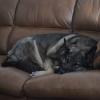
Merging FE2 with SF2, an experiment.
KJakker posted a topic in Thirdwire: Strike Fighters 2 Series - Mods & Skinning Discussion
I have done an experiment to get "First Eagles 2" objects into "Strike Fighters 2" and would like to ask if anyone would be willing to try it and corroborate my findings? To do this experiment you first need to own legal copies of both FE2 and SF2 5 full/merged. Next you need to do the following procedure. Copy “AvionicsWWI.dll” and “wwiComm.dll” from “C:\Program Files (x86)\ThirdWire\First Eagles 2\Flight” to “C:\Program Files (x86)\ThirdWire\Strike Fighters 2\Flight” then do the same for “wwiCambrai.CAT” and “wwiVerdun.CAT” from “C:\Program Files (x86)\ThirdWire\First Eagles 2\Terrains” to “C:\Program Files (x86)\ThirdWire\Strike Fighters 2\Terrains”. Now for the complicated part, extract everything from your SF2 ObjectData004.CAT, ObjectData005.CAT, ObjectData006.CAT, and ObjectData015.CAT. You will need to place these extracted .TGA files into your MODS directory Decal folder as these CAT files will not be available when you are done. Then take the four ObjectData CAT files that you just extracted everything from, and move them from the “C:\Program Files (x86)\ThirdWire\Strike Fighters 2\Objects” folder to a safe backup folder elsewhere on your hard drive. Next copy all four ObjectData CAT files from “C:\Program Files (x86)\ThirdWire\First Eagles 2\Objects” to a separate safe folder. Once copied, rename the copied FE2 CAT files to match the four CAT files that you removed from the “Strike Fighters 2\Objects” folder, like so… ObjectData001.CAT ----> ObjectData004.CAT ObjectData002.CAT ----> ObjectData005.CAT ObjectData003.CAT ----> ObjectData006.CAT ObjectData004.CAT ----> ObjectData015.CAT Be careful about the renaming due to both the old and new file names having one file named "ObjectData004". Now cut and past the renamed copies into “C:\Program Files (x86)\ThirdWire\Strike Fighters 2\Objects”. We are now done with the Install directory. At this point I recommend that you copy the stock Aircraft, GroundObjects, Guns, and Weapons from your FE2 mod directory and paste them into the SF2 mod directory that you intend to use for the experiment. I have attached the FE2 stock Aircraft, GroundObjects, Guns, and Weapons INI files if you don’t want to go through the trouble of generating them yourself. If all the above worked out, you should have the “First Eagles 2” stock Aircraft, GroundObjects, Guns, Weapons, and Terrain available for use in SF2. Please let me know how this works for you. Note1: You may need to extract everything from the terrain CAT’s “wwiCambrai.CAT” and “wwiVerdun.CAT” into your SF2 mod Terrain folder to fix some terrain issues. Note2: In order to get a fully working FE2 install, not just having the objects, weapons, and terrain available requires a lot more extracting and editing of FE2 INI files for SF2. FE2 Objects Folder.7z- 18 replies
-
- 1
-

-
From the album Combat Sims
-
From the album Combat Sims
-
From the album Combat Sims
-
From the album Combat Sims
-
From the album Combat Sims
-
From the album Combat Sims
-
From the album Combat Sims
-
From the album First Eagles & Voisin LA

